
Exhibitions: Current | Upcoming | Past
Exhibitions: Past
Histories: Lived, Learned, and Inherited
Michelle Brown
Talin Megherian
Stephanie Roberts-Camello
March 5 – April 30, 2020
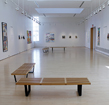
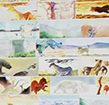
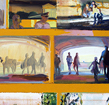
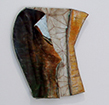
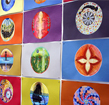
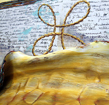
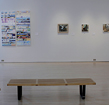
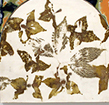
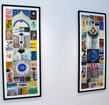
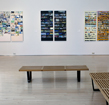
Histories: Lived, Learned, and Inherited is the third and final exhibition in our ongoing series of shows that examine the ways we reflect on the past, and the ways we connect and associate the lived experience with our understandings of history, of loss, and of change. The exhibition features the work of Michelle Brown, Talin Megherian, and Stephanie Roberts-Camello.
History is the culmination of past experiences. We can understand this broadly as the linear expression of events through time. When we are born, we enter into that timeline afresh, or so it would seem. It takes a while for us to learn that our relationships to history are shaped by a myriad of dynamisms largely outside of our control. Gender, culture, socioeconomics, geography, and religious affiliation are among the many forces that help to define our perceptions.
Michelle Brown refers to her work as tablets or storyboards. Her work is often presented in diptych form and symbolizes many ways of thinking about access to information. Although her work "reads" like an open book or a sequential narrative, the images are inspired by a number of sources and are meant to be seen either in linear time or as a series of interrelated images in which access can take on many forms.
Talin Megherian's imagery gives voice to her Armenian heritage. She grew up with stories of the Armenian genocide and the atrocities that were inflicted upon a people. Her father, an infant during the Armenian Diaspora, was almost left behind because of the difficulty of traveling on foot with a baby, but his grandmother refused and fed him chewed up grass to keep him alive. Talin's three series, Wells, Braids, and Khatchkars all pull from family stories and documents written during the Armenian genocide.
Stephanie Roberts-Camello's work is a response to transgenerational stories about her family history. The discovery of a box of family letters unveiled a time of suffering and loss during the Great Depression and the dust bowl days of Texas. Cowboys and farmers wrote of growing wheat and raising cattle during long droughts and dust storms that people had to endure in hopes for better days ahead. Using encaustic as her medium in relief form, Stephanie layers wax over old letters or eco prints of nature creating a visual and metaphoric stratum of time.
Kathleen Hancock
Director
Artists
Michelle Brown
I relate to reality as much through my passionate connection to literature as through painting. This cycle of work represents a shift away from a single image enterprise. These are diptychs that evoke an open book or the two hemispheres of the brain. The image could stand in for a word, strung on a line, or arranged like sentences on a page. Past, present, and future condense to reflect the challenges of the digital overload on our collective mind. My intention is to slow things down. I'm interested in using multiple images that culminate in lyrical verse rather than prose narrative. Wallace Stevens, writing about Marianne Moore, expressed that she "found illusion only tolerable in order to establish particular reality or better a reality of her own particulars." I work intuitively by way of an additive process, with little editing, toward the totality of the painting's surface and over-all design and color.
Talin Megherian
Memory, Story, Identity
My braid images hold stories and memories, most of which I have not experienced myself but are closely connected to me. As physical objects, the braids I paint from observation are my own from when I was about nine. The costumes worn for Armenian women's dance performances often portray a woman with two long dark braids. These hair extensions read as a symbol for an Armenian female. I learned traditional dances and have seen dance performances throughout my life—expressions of beauty that deeply connect an entire culture. Growing up, I always had two long dark braids, until I reluctantly agreed to have them cut off. I kept them. Today I paint them.
I've heard and read accounts of the atrocities of the Armenian genocide—philosophers, artists, priests, and teachers were some of the first to go. My father was born in the Armenian Diaspora. He was born while his family was fleeing from their homeland. His father wanted to leave him in the snow, because of the difficulty of traveling on foot with an infant. My grandmother refused and she fed him chewed grass to keep him alive. My grandfather was a guerilla fighter. He was captured by Turkish soldiers and thrown into prison. Three years later he escaped. It is amazing that he survived, let alone, be reunited with his family. There are tragic stories from both sides of my family. I feel compelled to give them a voice—in part, for a people that have not healed, and in part, for myself and for my family that still remembers. I feel the small degrees of separation between me, and the events that occurred during the genocide. In particular, I work to give voice to that of Armenian women—imagery of beauty, marginalized and compromised by brutality.
Connected-hair, so close to my being; disconnected, my hair.
Stephanie Roberts-Camello
Encaustic Relief: Shrouds and Missing Pieces
Discovering a box of old family letters in my family's basement changed the way I painted and how I thought about my work. There were stacks of letters bound in twine according to who sent them. They dated back as far as 1919 through 1946. Many of these letters reference the dust bowl days of Texas and the Great Depression. I come from a family of cattlemen and farmers who were dependent on the weather for their survival. Loss of crops due to droughts and tough conditions in raising cattle are common themes along with money problems. These problems are not mine, but I couldn't help relate them to obstacles and set backs that we all have.
Encaustic is a medium that can be worked flat or sculpturally. One of its many attributes is that it can retain any stress mark or scrape once it cools. It has an innate feature for documentation. These letters represent a period of suffering, loss, and endurance in our country, and for me—the intricately-worked encaustic shrouds became metaphors for struggle and change. Layers of wax literally cover up the past. I peel them back to reveal a portion of what once was. Revealed, exhumed, manipulated, up-ended, exposed—all of these actions give me a sense of freedom, and the ability to step outside myself. Seemingly destructive to the surface, the peeling plays a positive roll in removing a build up and seeing what has been lying dormant. It holds a stratum of time much like the earth's core. The depth created working this way is jarring to me, confrontational, alluring, and frightening. There is risk involved, but the presence of this relief work conveys a sense of resilience and life which keeps me returning. It speaks with a boldness and beauty which is also fragile. This opposition between image/content and material is the catalyst for the development of my encaustic relief series. This work continues to evolve as I find new ways to shed light on the past that enlightens and informs the future.
Biographies
Michelle Brown
Education
BFA, Painting, Massachusetts College of Art and Design, Boston, MA
Selected Exhibitions
2017 Migrations, gallery@ArtBlock, Boston, MA
2016 Happenings and Transmissions, The Newton Free Library, Newton, MA
2015 Kinship of Images, Dana Art Gallery, Dana Hall School, Wellesley, MA
2014 Literature of the Non-Word, gallery@ArtBlock, Boston, MA
Professional
2017 Visiting Artist/Professor at the College of Fine Art and Design at Shenyang Normal University, Shenyang, China
Talin Megherian
Education
BFA, Painting, Rhode Island School of Design, Providence, RI
Selected Exhibitions
2018 Resiliency and Resistance, Galatea Fine Art, Boston, MA
2017 Inspired Views, Montserrat College of Art, Beverly, MA
2016 Interlace, Armenian Museum of America, Watertown, MA
2016 Color, Providence Art Club, Providence, RI
2015 Pursuing Justice Through Art: 2015 A Multi-Cultural Genocide Symposium and Exhibition
Whistler House Museum, Lowell, MA
2014 Kiss the Ground—A New Armenia Part 1, Armenian Museum and Library of America, Watertown, MA
Stephanie Roberts-Camello
Education
BFA, Painting, Rhode Island School of Design, Providence, RI
Selected Exhibitions
2019 Fusion: Encaustic Works, Higgins Gallery at Cape Cod Community College, West Barnstable, MA
2019 A Woman's Work…Interior/Exterior Exploration, The Brush Art Gallery, Lowell, MA
2019 11:11 The Depth of Perception, Fountain Street Fine Art, Boston, MA
2018 Illumination, Gallery Twist, Lexington, MA
2018 About Time, Gallery Twist, Lexington, MA
Professional
Co-Owner and Creator of Queen Bee Honey Products, Product research and development

